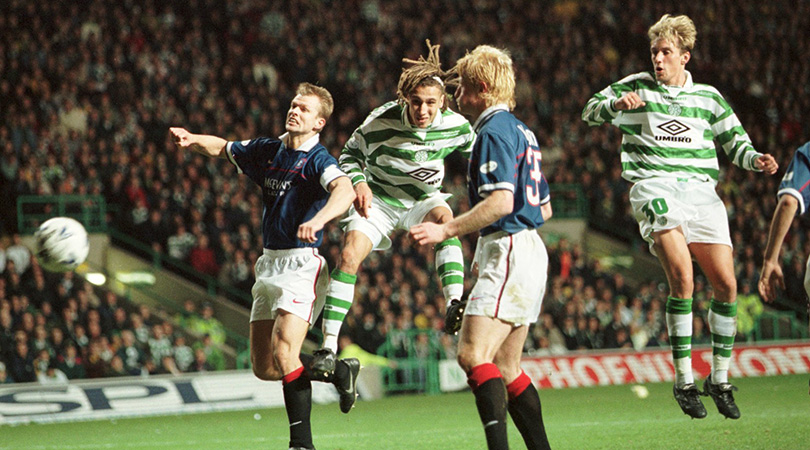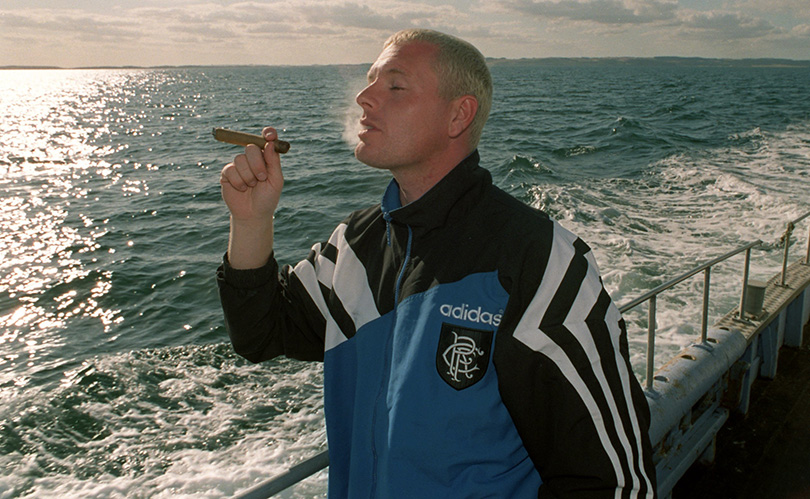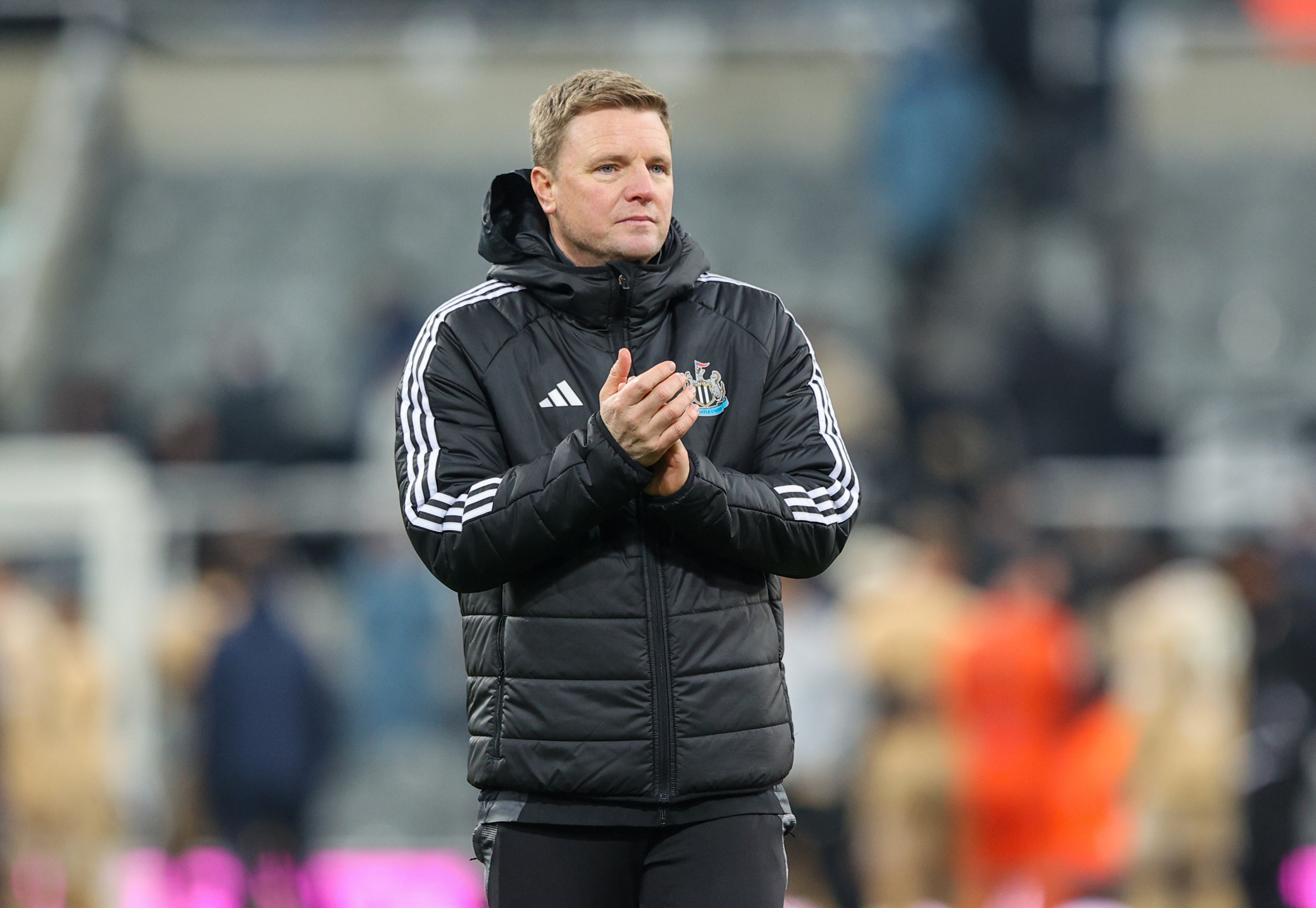Celtic and Rangers in the ‘90s: When the Old Firm felt (even) bigger
Gazza, Larsson, Laudrup, Viduka: Scotland’s giants boasted attacking superstars... before the Premier League’s growth swallowed everything up

Only one half of the Glasgow divide have warm recollections of the 1990s. Celtic claimed one league title against nine for a fiscally-supercharged Rangers (although Celtic’s win in 1997/98 did end the Gers’ bid for a record 10 championships in a row).
Yet for football fans with no allegiance to either, the 1990s conjure different memories. It’s a time when watching a Glasgow derby meant not just rubbernecking the white-hot intensity of those games, but also seeing some of Europe’s top talents face off in a must-see match.
At the start of the 1990s, a dominant Rangers side boasted as many England internationals as any team south of the border: Terry Butcher, Mark Hateley, Chris Woods, Gary Stevens, Trevor Steven and Mark Walters all played for Rangers in the early ’90s, even before the club landed the big one by paying Lazio £4.3m for Paul Gascoigne in 1995 (more on him in a bit).
Underlining their strength, Rangers comfortably handled English champions Leeds in the 1992/93 Champions League, winning both legs 2-1. To stretch a comparison, picture the Scottish champions of 2018 knocking Manchester City out of this season’s Champions League with home and away wins. This is not to sneer at modern Scottish football; more to illustrate the dramatic shift over the past 26 years.
Great Scots
For Celtic, the 1990s yielded less success but the club retained a penchant for flair. While foreign stars came later in the decade, the club boasted exciting Scottish talent. Silky playmaker Paul McStay lined up in midfield alongside John Collins, who’d go on to win Ligue 1 and reach a Champions League semi-final with Monaco. Yet Celtic would regularly finish behind not only Rangers, but also a strong Aberdeen side – boasting several Holland internationals of their own – in a more deeply competitive Scottish top tier.
Two transfers added to the league’s glamour. In 1994, prolific Danish stylist Brian Laudrup was signed by Rangers for £2.3m having starred for Bayern Munich and then won the Champions League with Milan (as Walter Smith will be quick to remind you). This statement of intent was followed by another with Gascoigne’s arrival a year on.
Get FourFourTwo Newsletter
The best features, fun and footballing quizzes, straight to your inbox every week.
As unpopular as the dominant Gers might have been outside of their own fanbase, it was thrilling to watch two world-class attacking midfielders share the same team. While Laudrup was at least self-effacing, amateur flautist Gazza had no qualms about winding up Celtic fans almost as much as he infamously wound up his own team-mates.
Enter: Ronaldo?
As outlandish as it sounds, Rangers even made a play for the world’s best player in 1997. The club’s bid for Brazilian striker Ronaldo came with a stipulation that he would be able to pick and choose the domestic matches he played in. Ronaldo’s agent has confirmed how seriously the offer was taken, but the bizarre contract clause encapsulated the problem: Rangers were an enormous fish in a relatively small pond.
Celtic also began to flex their financial muscle as the decade wore on. Dutch international striker Pierre van Hooijdonk made his debut in January 1995 with a jaw-dropping solo goal. In 1996, Paolo Di Canio arrived with his usual mix of genius and madness, including a sending-off for ultra-aggressively celebrating his own penalty against Hearts and, inevitably, a red card against Rangers after the game had actually finished.

Combined with the skilful Portugal international Jorge Cadete, it gave Celtic a kind of erratic brilliance. The Hoops couldn’t match Rangers’ superior consistency, but they could be thrilling to watch. A 3-3 draw in the middle of the decade (goalscorers included Laudrup, Collins, Ally McCoist and Van Hooijdonk) was a high-calibre thriller.
In 1997, Celtic welcomed the arrival of a man to combine quality with reliability at last. Henrik Larsson, dreadlocks flowing, tongue poking, made an impact as Celtic finally broke Rangers’ league monopoly. He’d go on to score 242 goals in seven seasons and briefly combined with elite Aussie target man Mark Viduka at the end of the decade.
Yet while Larsson was the jewel in the crown of Celtic’s imported attackers, his spell also signposted the end of an era. By the early 2000s, it was frequently asked why Larsson – a player good enough for almost any club in the world (as he’d later prove at Barcelona and, briefly, Manchester United) would play in the Scottish league. Even for clubs with the global reputation of Rangers and Celtic, attracting top talent was becoming trickier.

STORY Larsson at Manchester United: how a 10-week loanee made a major impact
BIG INTERVIEW "I got letters from parents, upset that their kids were running around with their tongues out"
Tides change
Some might point out that Rangers’ financial muscle came via money the club simply didn’t have (although they would hardly be alone there). However, wider forces were at play too.
Rangers and Celtic could match many other European sides for wages because so much of a club’s income was based on factors such as live attendances, shirt sales and sponsorship more directly related to fanbase size. Rangers in particular were also beneficiaries of a post-Heysel era when English clubs were banned from Europe and therefore found it trickier to attract or keep talent as they had in the early 1980s.
Yet as England’s Premier League found its feet, TV contracts became king. Football in Europe was becoming less about the size of the club and more about the size of the league your club was in. Being in the Premier League, La Liga, Serie A or the Bundesliga – even as an also-ran – became key to wealth and power.
Celtic and Rangers are hardly alone in suffering here. Historic powerhouses such as Steaua Bucharest and Red Star Belgrade – feared across Europe in their pomps – are now in a position where they can’t compete with the likes of Barnsley and Bournemouth when it comes to signing players.

Not that it spells doom for Glasgow’s own giants. It’s worth pointing out that both clubs reached a major European final in the 2000s (two more than was managed in the 1990s) with teams that were more than the some of their parts.
Yet those ‘parts’ are often what pulls a casual football fan to a game. That’s why Celtic versus Rangers in the ’90s still evokes fond memories for many, who recall an era when the size of the names on the shirts were a match for the badges on the front.
THEN READ…
REMEMBERED! When Leeds' Class of '92 punished Stuttgart for a big night in Barcelona
WHERE ARE THEY NOW? Martin O'Neill’s Treble-winning Celtic side of 2000/01
FEATURE How Souness kick-started a Rangers revolution, by the man himself 30 years on
Alex Reid is a freelance journalist and the former digital features editor at FourFourTwo. He has also written for the Guardian, talkSPORT, Boxing News and Sport magazine. Like most Londoners, he is a lifelong supporter of Aberdeen FC. He is deceptively bad in the air for a big man. He has never been a cage fighter.

